Do you pump or bail?
|
Administrator
|
A capsize can focus the mind.
Do you have a bilge pump in your Morbic, or other dinghy? Where is it mounted? Where is the suction point? Is it electric or manual? Do you recommend anything in particular? (Or to avoid?) Any other thoughts? |
|
Oh dear, sounds like there's a story behind that question
 I simply take a scoop bailer with me, but I haven't tried it in earnest. I picked up an Elvstrom self-bailer at the Worthing boat jumble for peanuts, and I must get round to fitting it. I reckon the Morbic will have enough speed to make it work if necessary, and it will drain the boat on land much better than the bung at the back. |
|
Administrator
|
Ah yes John. You guessed! But not very exciting. The mast went slightly past horizontal. Only about 1ft of legs got wet, and that probably just from standing in the righted, swamped boat. I'll spare you details unless you would like to analyse them (or me).
Isn't there someone in our fraternity who has tried an e-pump? Self bailer? Does a swamped Morbic go fast enough to self bail? And don't they always weep inward? There is some discussion about whether TWO are needed > Here <. Draining on land? - Take a rest on the slipway to let the bunghole do its job! |
|
They always say that the best bilge pump in the world is a frightened man with a bucket!
I use a plastic hand pump which is way quicker than a scoop, though I do have a scoop too for answering the call of nature 😜 |
|
Cadfael was fitted with a high capacity self-bailer. On a good reach in a fresh breeze it would draw. However, it does weep. In fact sometimes it's hard to re-seal it and you have to jigger about with it to get it to stop flowing inwards. A misplaced foot can start it flowing again. It's coming out over the winter. I have a silicon rubber bucket which collapses into a flat disc which is really good and a scoop for smaller quantities and to get in between frames. I would not go to an e-pump personally as the beauty of these boats for me is their simplicity. Also I doubt if you could install enough battery power to cope with a semi-swamped boat.
|
Re: Do you pump or bail?
|
There are two of us so we pump and bail!
We have had a practice capsize on the lake at Dorchester SC with a light wind, wearing dry suits and observed /advised from a safety boat. Not conditions in which one would capsize but the aim was to establish the roles we would take if needed.
Lessons learnt: Sarah is too light to right the boat. Michael is heavy enough but only with the aid of the righting lines as there is no grip to be had on the hull and the gunwhale is out of reach. One tosses the line over while facing away from the boat. A rope ladder reachable over the stern from the water helps re-entry.
Buoyancy aids ride up without crutch straps: now fitted.
Lots of water aboard, but below centreboard slot. Boat stable and bailed using bucket and plastic hand pump. Seemed about equally efficient. Our bailer is too small and our fitted small diameter hand pump is inadequate.
We have extra forward buoyancy tanks which probably reduce water intake but also place the centreboard higher out of the water.
Mike and Sarah.
 
|
|
Administrator
|
This post was updated on .
Thanks, Mike, for your info, observations and pics.
Edit 24/3/24. See "Morbic Capsize Re-boarding" I've capsized Proteus twice:- 1st time was by mistake. As she went over I was able to remain "seated" on the windward (i.e. upper) gunwale. RIGHTING - My (relatively minimal) weight standing on the plate, against the hull, slowly brought her up while I simultaneously slid inboard. I didn't get wet till standing in the cockpit to bail. 2nd time was a practice. To capsize I stood on the port gunwale. Subsequently, I stayed INSIDE the boat. I climbed onto the starboard gunwale by using the centreboard case as a step. Righting the boat - "a little under 10 stone" on the plate, against the hull - and returning to the cockpit was as above. Other possibilities to try:- i) Stirrups or short rope ladders attached at frame 3 might facilitate climbing up inside the boat, if one was tired, injured, less nimble etc? ii) Loosen the mainsheet? iii) Release the main halyard and "lower" the main before attempting righting? I guess a snag with trying to right the boat, by pulling/pushing down on the tip of the plate when you are swimming, is that your buoyancy reduces the weight you can apply (unless you're nimble enough to actually climb on to it. Below = Climbing up inside the boat. Use centerplate case as a step. Sit on the top gunwale. Stand on the plate AGAINST THE HULL. Up she comes! 
|
|
I made a controlled capsize the other day in the sheltered waters of Reading Sailing Club (thanks to Paul W) and these are my findings:
- The boat floated a little high when capsized, but showed no sign of wanting to turn turtle. - I could reach the centreboard and by pulling it down to my waist the boat very slowly righted. I was a little alarmed at the degree of flex in the centreboard when my full 12.5 stone was imparted! - When righted, the boat was about 1/2 full of water and I was pleasantly surprised how stable it remained. - I could not haul myself in over the side - the side was just too high for me and echoing Mike and Sarah I lacked anything suitable to hold onto to help me in. My solution has been to make and fit a 'stirrup step' port and starboard, attached to the middle frames (using the existing holes in the side members). They are stowed attached ready for use, lying on the inside of the hull. They can be pulled into use by reaching over the gunwale on the relevant side. The step on the other side will remain inside the hull and hopefully provide the missing hand hold. Well, that's the theory - I'll need to try it out. The same design might also possibly be attached to the stern limber hole (strong point with no drilling required) and dangled over the stern, perhaps kept in place by the tiller cut out or sculling notch. 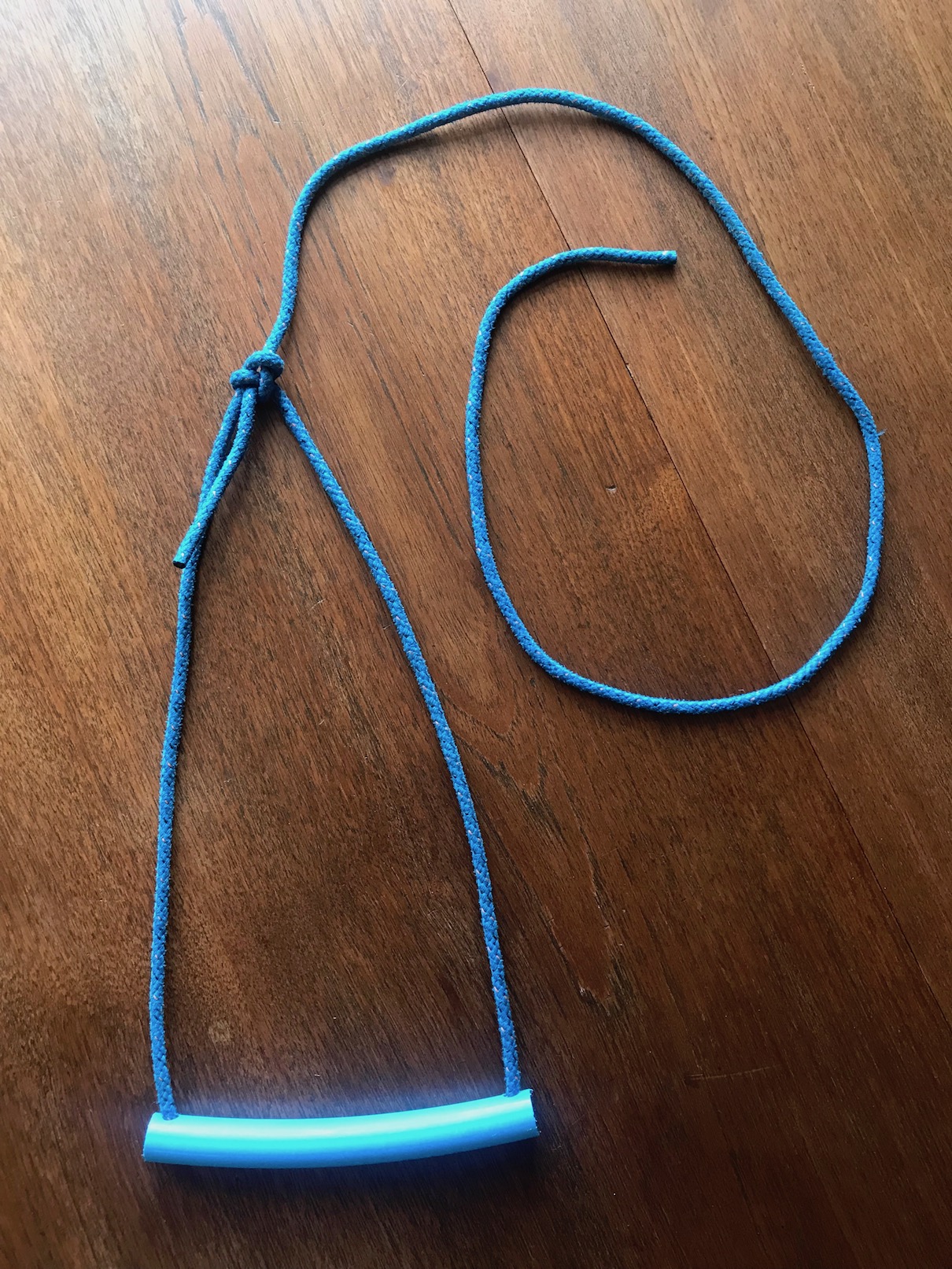 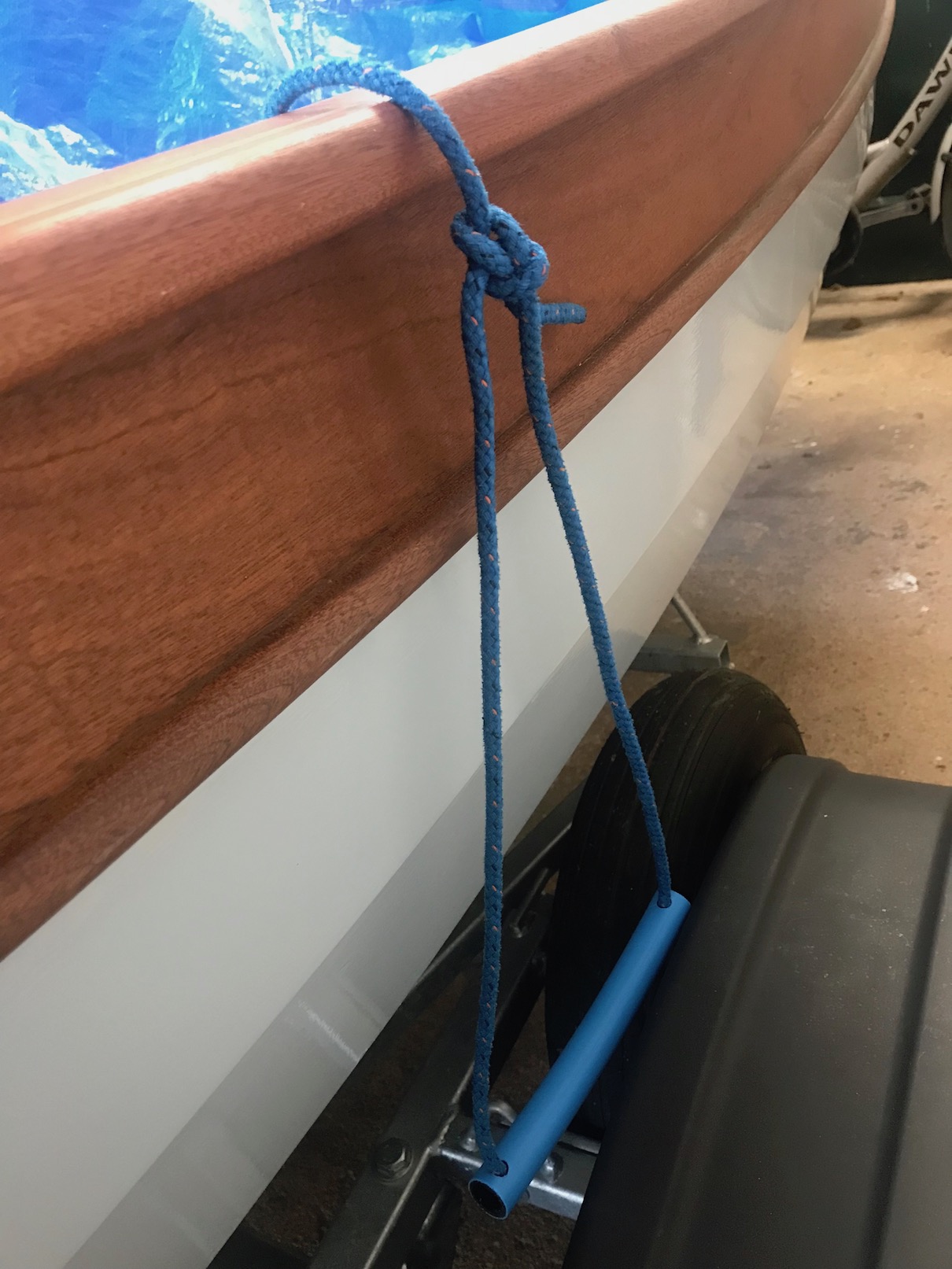 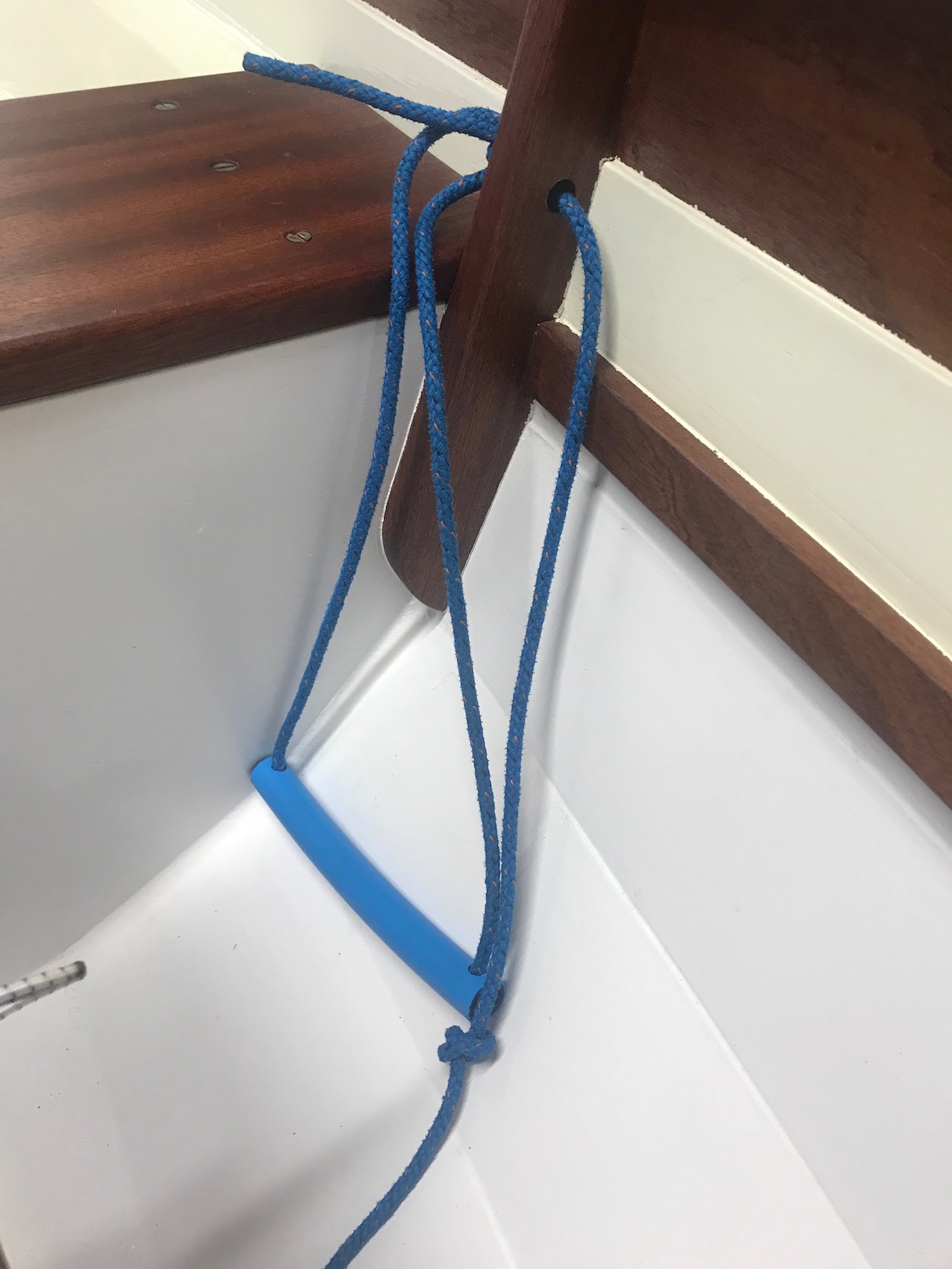
|
|
Administrator
|
This post was updated on .
In reply to this post by Michael and Sarah Curtis
Links to several capsize videos inluding "Swefn" are in the first posting under "Capsizes. Deliberate and accidental" in the Members Only section of the forum.
Edit 24/3/24. Also see "Morbic Capsize Re-boarding" |
|
This post was updated on .
In reply to this post by PaulW
Further to the thread, do you pump or bail
Yesterday, two of us tested re-entry methods for a capsized Morbic 12. Hugh is in his 60s and fully fit, I’m in my 70s and I am recovering from a broken arm. We found: 1. Neither of us could re-enter using side stirrup fixed amidships. Our feet simply disappear under the boat, the body goes backwards away from the sides and we don’t have the upper body strength to haul in. 2. A short removable ladder fixed to the transom is feasible re-entry system, but is unlikely to be readily available in a real event capsize, that is in 20 knot winds and in a rough sea state. Where would the ladder be stored? if inside the boat, could we actually reach it and recover it? 3. The best method was rudder stirrup clipped to a saddle screwed to the rudder stock (see photos). Hugh was able to easily reenter the boat from the water; I struggled with a partially functional arm, but I think I will be able to manage when the arm is fully healed. The step consists of a cord, clip and an aluminium tube; the height can be adjusted in the water. In use, the step is kept in the pocket of the buoyancy aid. You, take it out, clip it to the stock, put your foot on the step, brace against the rudder and heave over the transom. We also noted: 1. The Morbic was dead easy to right. 2. We couldn’t get the boat to turn turtle – a hollow mast probably helps here. 3. You can easily lower the centreboard whilst the boat is capsized 4. The amount of water post capsize is small, about 10 cm. 5. In the event of a real event capsize, it would be advisable to drop the sails before attempting re-entry from the stern to reduce the probability of the boat sailing away downwind. 6. And as always, we note it is best to avoid capsize in the first place:) … sail to the conditions and reef early. 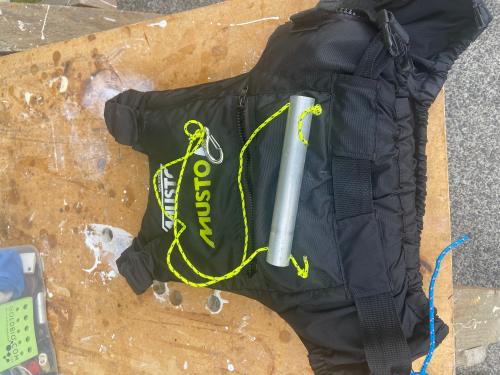 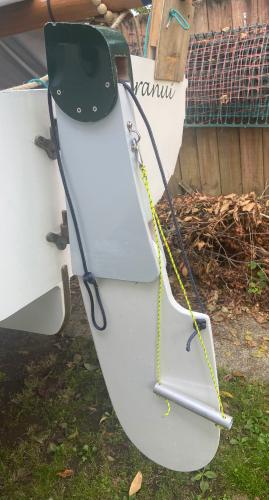
|
«
Return to MyMorbic Sail-&-Oar Dinghy UK Network
|
1 view|%1 views
| Free forum by Nabble | Edit this page |

